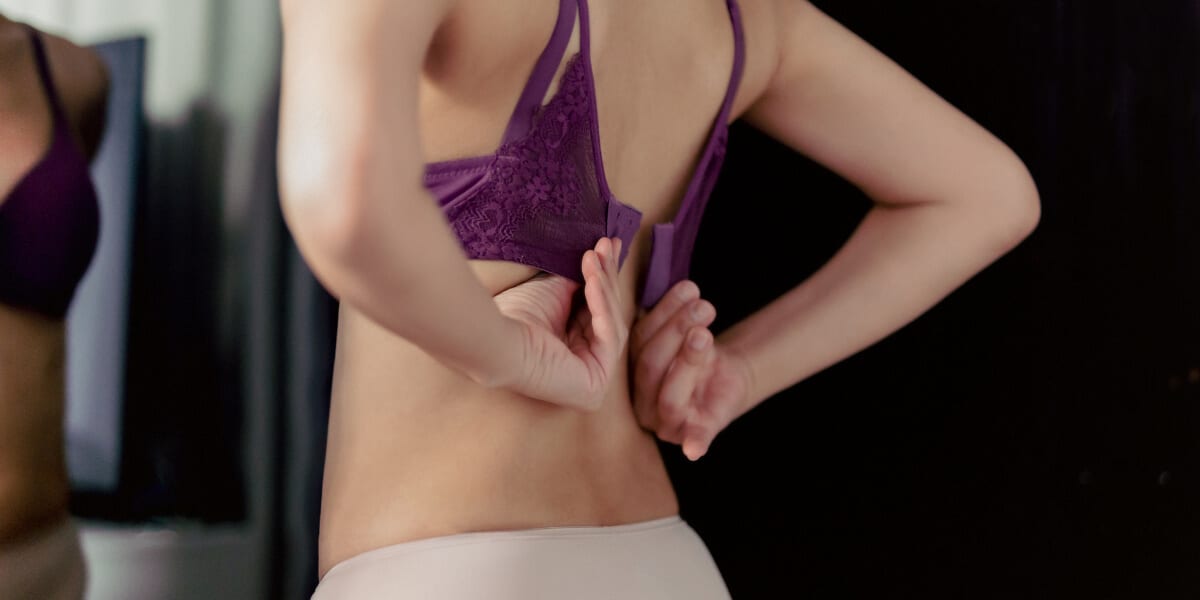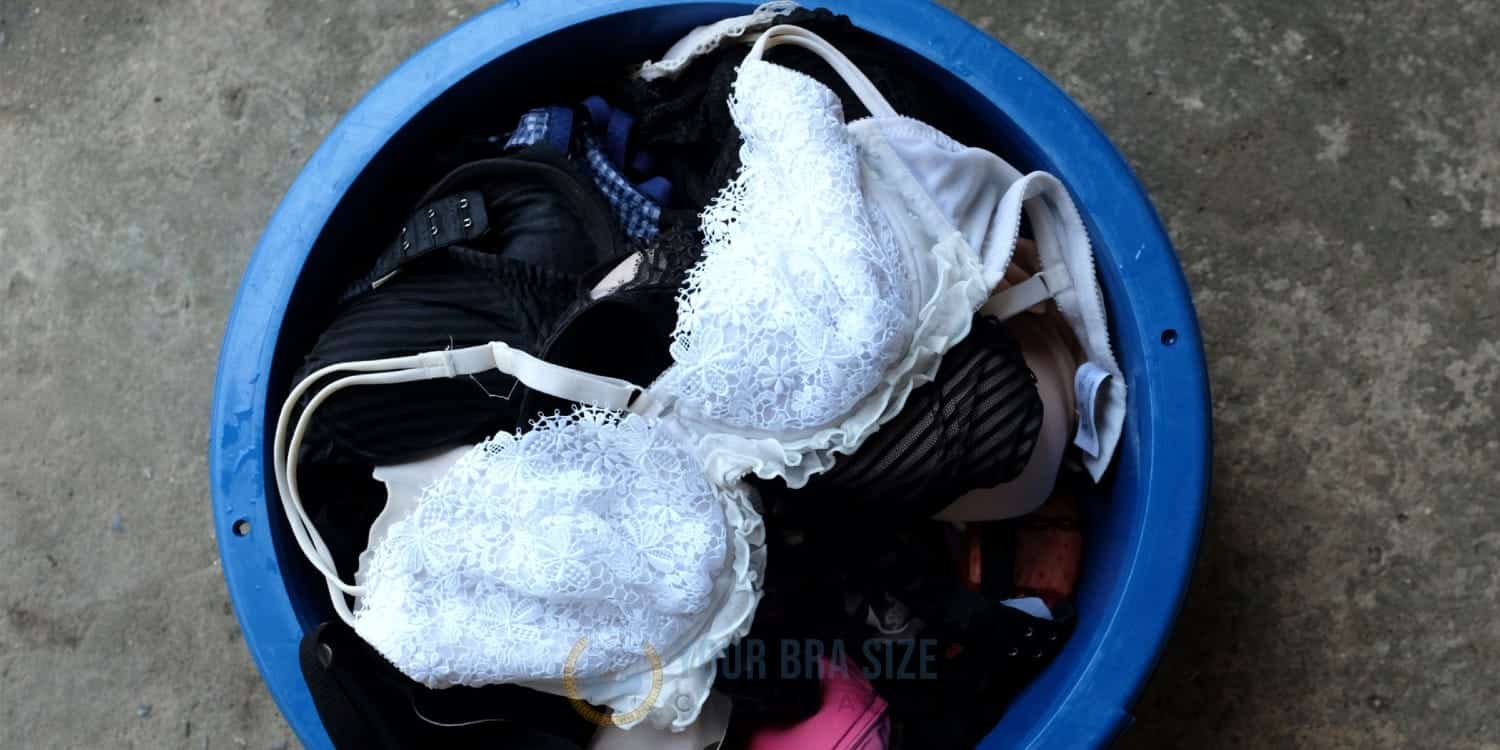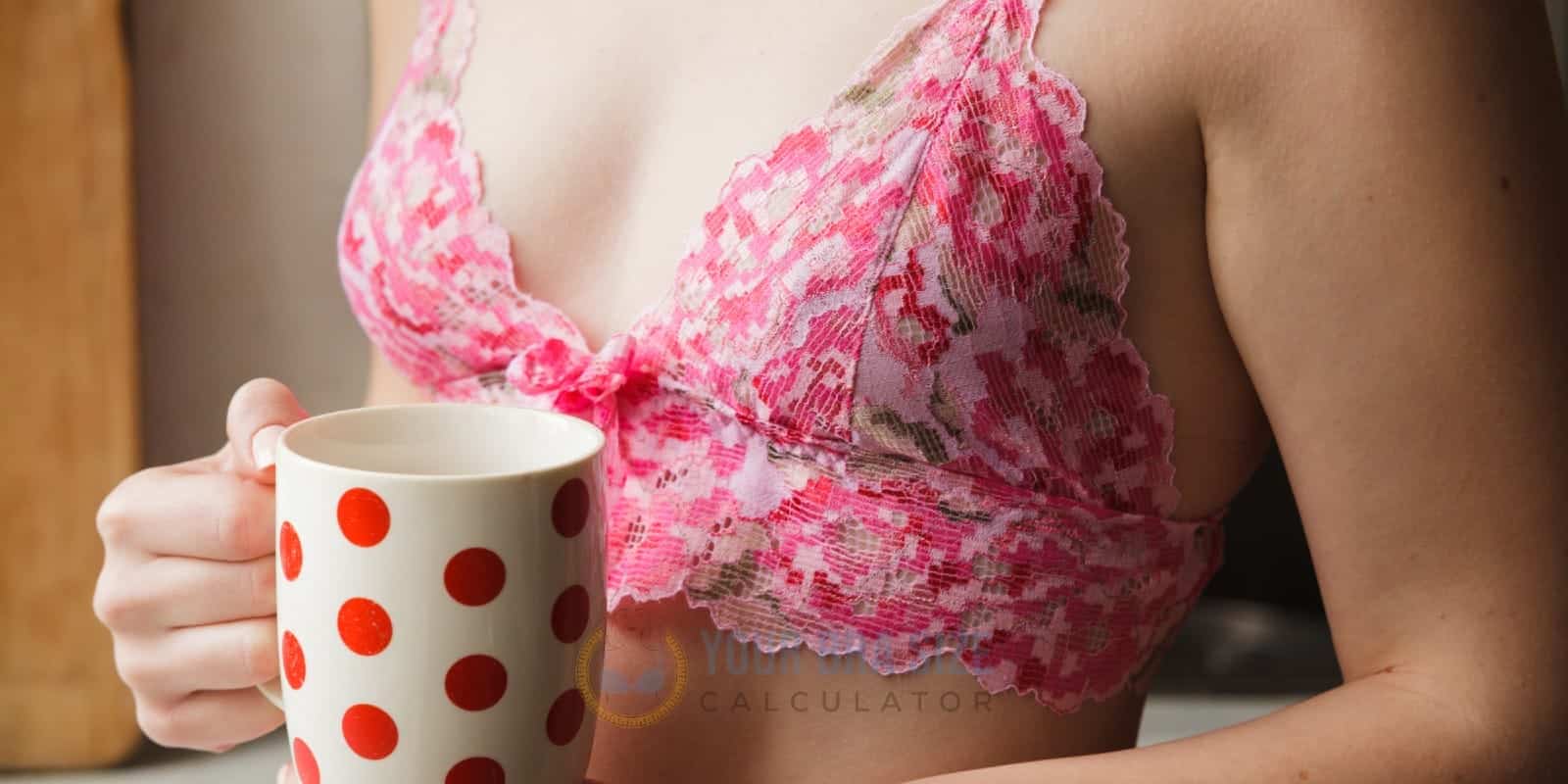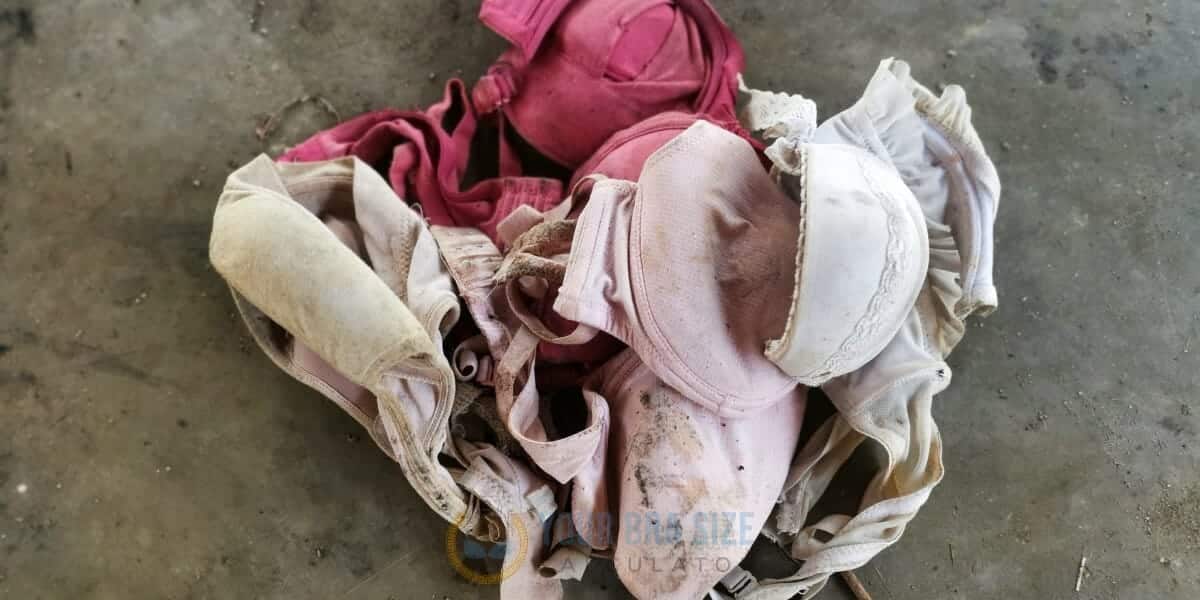Bra hooks are essential to a bra, but unfortunately, they can often become worn out or broken. If you’ve ever found yourself in this situation and don’t know how to fix the hook, look no further! This article will explain how to repair your bra hook to be as good as new.
For those needing to become more familiar with clothes repairs, fixing a bra hook might seem intimidating at first glance. But fear not – even if you’re a beginner in sewing and mending clothes, follow these instructions. Soon enough, you’ll have repaired your bra hook like a professional tailor!
Following our simple guide on How To Fix Bra Hooks, you’ll never need to worry about having a broken or damaged one again – saving time and money in the long run. So let’s get started – read on for all the details!

Types Of Bra Hooks
Bra hooks are like a puzzle, each piece coming together to make the perfect fit. From various hook styles and materials to sizes that accommodate different body types, they all represent an essential part of bra construction. We’ll look at the common types of bra hooks, styles of closures, materials used in production, and how size affects the overall design.
The most commonly found type is the two- or three-hook closure style; these come in both metal and plastic varieties. The metal version is usually made from nickel or brass and has existed since the early 1900s. Plastic versions often feature reinforced eyelets for extra strength and durability. Hook sizes vary by brand, with some offering larger sizes for plus-size bras while others may go up to four rows of hooks for additional support.
Hook material selection can also depend on preference; those looking for a more classic feel might choose a metal option, while individuals seeking comfort might opt for a softer yet durable plastic choice. Whatever you select, it’s essential to consider your body type when choosing what works best for you – smaller frames needing less coverage than larger ones – as this will help ensure proper fit and comfort throughout wear.
No matter what type of closure you decide upon, careful consideration should always be considered before purchasing to get the best possible result for your needs. This includes understanding how different hook sizes affect overall fit and noting how long it takes to put on/off your garment without feeling rushed or frustrated during dressing time!
Tools Needed For Repair
Before attempting to repair your bra hooks, it is important to have the right tools. You’ll need a needle, thread, scissors, and a hook-and-eye set. A thimble can also be helpful if you are dealing with delicate fabrics.
- Needle
- Thread
- Scissors
- Hooks & Eyes Set
- Thimble (optional)
Having these items on hand will ensure your repairs are prosperous and secure. Additionally, having the proper tools will save time and reduce frustration during the repair process. To ensure a smooth transition into the next section about repairing bra hooks, take a moment to gather all of the necessary tools before moving forward.
Steps To Repair The Hooks
Repairing hooks on a bra is relatively simple and can save time, money, and energy. The first step to fixing the hooks is to inspect them for damage or wear. If there are visible signs of damage, such as cracks in the plastic, it’s best to replace the hook completely rather than attempt to fix it. You’ll need an appropriate replacement hook that fits your bra to do this.
The next step is changing the old broken hook with the new one. This requires removing the stitching around where the old hook was connected, taking care not to damage any other part of the fabric. After removing the stitches, thread your new hook through the same holes used by its predecessor, ensuring that all threads are securely tucked away, so they do not show when wearing your bra again. Finally, sew it back together using a solid line that matches both color and texture of the fabric surrounding it.
When done correctly, you should now have newly repaired bra hooks ready for use! By following these steps carefully and ensuring all stitching has been properly sewn into place, you can guarantee that your bra will be restored to its original form without compromising comfortability or security. Sewing a new hook in place allows for longer-term usage compared to trying temporary fixes like glue or tape, which may only last temporarily before needing to be replaced again soon after.
Sewing A New Hook In Place
Sewing a new hook in place can seem like walking through a minefield, but if done correctly, the result will be a secure and lasting fit. To replace an old or broken bra hook, one must first assemble the necessary items: a sewing needle with thread, scissors, fabric marking pen or chalk, and the replacement hook. With these tools at hand, let’s start stitching!
First, take some time to measure where the new hook should be placed on the band of your garment. Mark this location lightly with a fabric marking pen or chalk for easier visibility when it comes time to stitch. Next, carefully thread your needle with enough length so that you have room to work without tight restrictions comfortably. Now grab your replacement hook and begin stitching along its perimeter until it is securely attached to your garment’s material. Carefully knot off the thread once finished and trimmed any excess from both ends.
Double-check that all stitches are secured tightly before using your newly sewn-in hook; nothing is worse than having it come undone after only a few wears! Ensuring each loop is properly caught by its corresponding eyelet will ensure that no future issues arise related to improper attachment. With careful attention given during the placement and implementation of our new bra hooks, we can rest assured knowing they will last us far into our next fashion adventure!
Troubleshooting Common Issues
If you’re having trouble with your bra hooks, don’t worry. Several troubleshooting tips can help you get them working properly again. First, check whether the hook and eye have become misaligned or deformed. If they have, gently adjust them back into place with a pair of pliers. You may also want to lubricate the parts with light oil for better fastening.
In addition, many times, the problem is caused by dirt or debris building up on the connection points over time. In this case, use a soft cloth soaked in rubbing alcohol to clean away any grime or buildup from both surfaces of the hook-eye mechanism. This should restore proper functioning and keep it operating smoothly for extended periods.
Finally, take extra care not to overtighten any screws on the hooks, which could cause damage and prevent them from working correctly. With these simple troubleshooting steps, you should be able to diagnose and fix any issues with your bra hooks quickly! Let’s look at ways to practice preventative maintenance to keep our bras working their best.
Preventative Maintenance Tips
The average woman is estimated to wear her bra at least 4-6 times a week. To ensure your bras remain in good condition, practicing preventative maintenance techniques such as regular hook inspections is important. Bra hooks are essential for securely fastening the band of a bra. Over time, these clasps can become worn or bent out of shape due to tension from wear and tear. To extend the life of your bras, there are some essential tips you should follow when caring for your bra hooks:
First, inspect each clasp before wearing them by testing their strength with gentle pressure between two fingers. It may be time to replace them if they feel weak or have any visible damage, such as cracks or loose threads. Also, avoid washing your bras in hot water – this will make the metal more brittle and prone to breakage. Instead, opt for handwashing with cold water and mild detergent only when necessary; air drying is preferable, but using a dryer machine, use low heat settings.
Lastly, store your bras properly away from direct sunlight and moisture which can cause rusting on metal parts like the clasps and straps. Doing so will help maintain its original quality for extended periods without frequent repairs or replacements. Taking these steps towards proper bra hook care will keep your lingerie looking great while providing maximum comfort throughout everyday activities!
Frequently Asked Questions
What Is The Best Way To Clean Bra Hooks?
Cleaning bra hooks are an essential part of taking care of your lingerie. If you’re wondering what the best way to clean them is, a few options are available. From preventative cleaning solutions to removing tough stains, here’s what you need to know about cleaning bra hooks:
- Use mild soap and warm water – This is an excellent option for everyday maintenance and preventing dirt buildup on your bra hook closures.
- Spot treats with diluted vinegar solution – Vinegar is known for its natural deodorizing properties and can be used as a spot treatment for grime or buildup. Dilute it in equal parts water before using.
- Hand wash with laundry detergent – For more challenging spots or when dealing with sweat residue, use a gentle liquid laundry detergent made explicitly for hand washing delicate fabrics like bras.
- Machine washes on gentle cycle – If all else fails, try washing your bras gently with cold water and air drying afterward to avoid damaging your undergarment’s fabric or metal components.
These methods may not work depending on the type of material or stain present, so if one way doesn’t seem to do the trick, try another! Additionally, always follow any special laundering instructions the garment manufacturer provides, as this will ensure maximum protection against damage from improper cleaning techniques. Taking proper precautions when cleaning bra hooks can help preserve their shape and condition over time which helps extend their lifespan significantly!
How Do I Know If My Bra Hooks Need To Be Replaced?
Sometimes, the small details don’t matter in life. But it would be best to never take them for granted regarding something as essential as your bra hooks. From inspection to replacement, you must ensure that these tiny yet powerful pieces of material are well taken care of.
Bra hook durability is an issue that many people experience, especially after a few years of ownership. It’s critical to inspect your bra hooks regularly so that any damage or wear can be identified quickly. Look out for fraying edges, weak clasps, and general signs of deterioration – all of which could indicate the time to replace your bra hooks.
The type of material used plays an important role too. Many newer models feature more durable materials, such as stainless steel or plastic-coated metals, designed to last longer than traditional brass or nickel options. Furthermore, regular maintenance should also be part of your routine; this includes wiping down with a soft cloth after each use and checking for rust before storing away for long periods.
It’s understandable if replacing bra hooks isn’t on top of your priority list, but remember: ensuring they’re in peak condition will save you from unnecessary discomfort and hassle further down the line!
Is It Possible To Adjust The Tightness Of The Hooks?
Adjusting the tightness of bra hooks is possible and an easy way to ensure your bras are a comfortable fit. If you find that your current hook closure isn’t providing enough support, or if it’s too loose and does not offer good hold, tightening the hook can be an effective solution. Here are some tips for adjusting the strength of your bra hooks:
- Check for any wear-and-tear on the hooks, such as rust or fraying threads. If any damage is present, replacing the hooks may be necessary before attempting to adjust them.
- Use pliers to gently squeeze each side of the hook together until they meet at the center point to reduce its size and increase tension. Make sure not to over-tighten them, though!
- Examine how secure and comfortable it feels once adjusted. If all goes well, you should have successfully tightened your bra hook without replacing it altogether!
By altering the tightness of your bra hook with these simple steps, you can ensure better overall comfort while wearing it. This will help maintain proper positioning throughout movement and activities and extend their lifespan by reducing strain from excessive stretching or tugging due to being too loose. Additionally, adjusting hook strength is a great way to regulate temperature during hot weather since tighter closures create less airflow, which helps control sweating. So next time you feel your bras need a little extra snugness, there’s no need to go out and buy new ones – try readjusting the existing hooks instead!
Is There A Difference Between The Hooks On Different Types Of Bras?
When it comes to bra hooks, there are many different types available. These hooks can differ in size and shape depending on the bra style. This is important for those looking to fix their bra hooks or adjust their tightness of them.
Bra-hook types vary from small metal clasps to larger plastic ones that resemble buttons. Different bra hooks may also be made of nylon, velvet, spandex, and other materials depending on the type of garment they are attached to. For example:
- Metal clasps are often used for underwire bras;
- Plastic hooks come in a range of sizes and colors;
- Nylon hooks usually have adjustable straps;
- Velcro closures are often found on sports bras.
It’s essential to know what kind of bra you’re buying before selecting one with specific hook styles, as this affects how well it fits your body shape and size. Bra-hook differences depend on the construction and design of each particular type—from racerback tank tops to plunge front lingerie pieces—so make sure you consider these when choosing a new item. Additionally, Various-bra-hooks might require special tools like pliers or jewelry cutters to remove or attach them properly, so keep that in mind if you plan on doing any alterations yourself at home.
No matter which type of bra you select, always ensure that its hooks provide adequate support for your bustline and enhance your comfort level while wearing it. Keep an eye out for any signs that suggest the fasteners need adjusting, such as slipping straps or loose fabric around back bands—these could indicate a problem with Bra Styles Hooks. Considering all these factors should help guarantee that you find the perfect fit!
What Types Of Materials Are Best For Repairing The Hooks?
When repairing the hooks on your bras, it’s essential to consider what materials are best for the job. Different bra hook types can require other materials for a successful repair. Understanding these differences is critical when considering a replacement or maintenance plan.
The most common material used in bra hook repairs is metal. Metal offers durability and flexibility, making this type of material ideal for fixing broken hooks and securing them firmly into place. However, plastic is also an option if you’re looking for something more lightweight and stylish. Plastic works are great for those who want to add extra shine to their bras without sacrificing strength or security.
When deciding between metal and plastic, several factors should be taken into consideration:
- Durability: Metal is usually stronger than plastic, so that it may be better suited for hook replacements or heavy-duty wear.
- Style: Plastic might offer more options in style, whereas metal will give you a classic look with added practicality.
- Cost: Both materials come at varying prices depending on quality and availability, so always check before purchasing!
No matter what type of material you choose, proper care must still be taken when replacing or maintaining bra hooks. Make sure to follow all instructions carefully and use caution when handling any sharp tools during repairs. Additionally, inspect your bras regularly to ensure they’re functioning correctly and address issues promptly if needed – this way, you’ll have peace of mind knowing that your garments are secure and ready for whatever life throws at them!
Conclusion
The bra hooks symbolize strength and resilience, just like us. They’re always there to hold things together when we need them most. But sometimes, they can become worn down or damaged, leaving us helpless. We know it’s essential to care for our bras to keep their hooks in good condition.
Cleaning the hooks regularly with warm soap and water will help keep them looking new for longer. Replacing your hook may be necessary if it has been stretched out over time. And if the tightness isn’t quite right, adjusting it can make all the difference. Lastly, choosing a suitable material is essential for durability and comfort – metal hooks are strong. Still, plastic ones might offer more flexibility depending on what kind of bra you have.
Taking care of our bra hooks is a great way to show ourselves some love and appreciation! Our bodies deserve only the best. Ensuring our bras fit correctly helps us feel confident and secure throughout the day. So remember to give those tiny little treasures some special attention now and then; after all, who better than us knows how to fix bra hooks?








